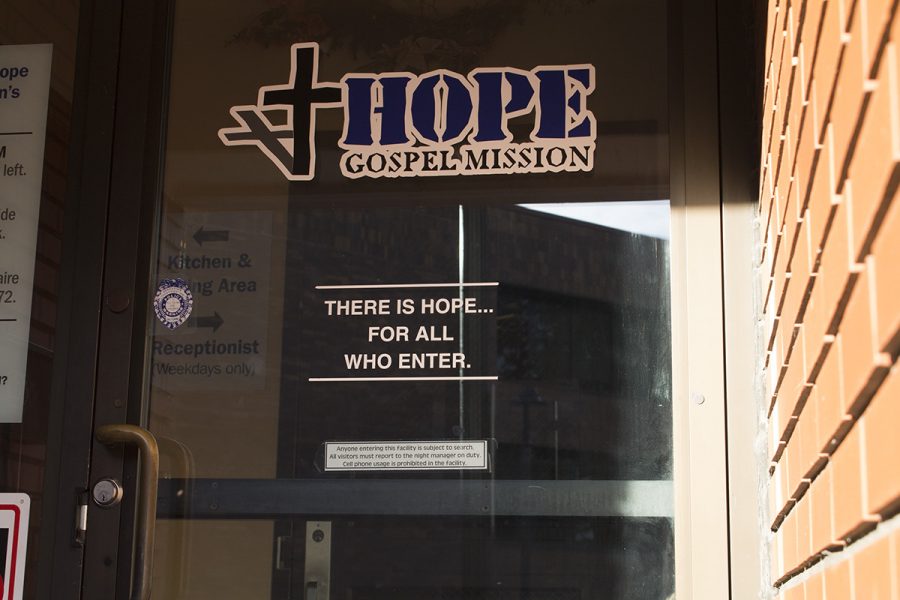Altoona coldly rejects facility for the homeless
Hope Gospel Mission’s plans for addiction recovery and life skills based homeless shelter come to a grinding halt
More stories from Sydney Purpora
Photo by Submitted
Eau Claire’s Hope Gospel Mission facility is not letting the setback impact their current progress. Continuing to help those in need, they are offering programs and services to homeless people in the area.
The Altoona Plan Commission rejected Hope Gospel Mission’s request for a conditional use permit for the organization to open a homeless shelter last week. At the public forum Monday Sept. 12 an anonymous vote denied the Hope Gospel Mission’s request.
What could be wrong with another homeless shelter to help those in need? Apparently a lot.
Board President Mark Donnelly said it is a major setback in the organization’s plans for services for women and children, but they seemed accustomed to this type of response.
“It’s the same old thing: we like what you do but not in our backyard,” Donnelly said.
So, the community likes the idea of a homeless shelter but not anywhere near their homes. Unfortunately, there is a stigma associated with homeless shelters negatively impacting those around it.
An article from the Leader-Telegram stated neighborhood residents and property owners are concerned about “noise, traffic and potential for crime resulting from the proposed facility.” Now, although there are rare occasions when homeless shelters affect a neighborhood’s environment, a homeless shelter is there to help those who are normally exposed to violence and poverty to escape those situations.
We need to focus more on how another homeless shelter in the area can positively impact the community. Hope Gospel Mission stated the plans for the homeless shelter include offering women and children faith-based help for addiction recovery and life skills programs. Giving them a place to go and improving their situations will all-in-all benefit the public.
An article on Force Change website states this type of homeless shelter is proven to be more effective. The article explains most homeless shelters just address the symptoms of homelessness, not the causes. This one would have made a difference.
By approaching the problem of homelessness at the root, we can solve the issue and prevent them from returning to poverty again. Despite all of the benefits of the proposed facility, the community is only interested in the impact on their own lives.
The Leader-Telegram article goes on to state that an owner of two rental properties next to the building, Mary Varpness, is concerned about the impact on property values and quality of life for her tenants due to the number of people who might be staying at the facility.
We want a full house with this type of homeless shelter. If people who are homeless never get a chance to improve their living situation or learn life skills, then we won’t be able to solve homelessness and get them off the streets permanently.
In an article on the website PolitiFact, Secretary Shaun Donovan said helping the homeless by implementing a successful strategy that gets them standing on their own two feet is going to cost less in the long run.
“The thing we finally figured out is that it’s actually, not only better for people, but cheaper to solve homelessness than it is to put a Band-Aid on it,” Donovan said.
Hope Gospel Mission’s website states they are “dedicated to addressing the root causes of a homeless person’s problems,” assuring the public they not only want to help people temporarily, but permanently change their lives for the better.
So, although it may alter property values now, having a homeless shelter that offers various services outside of providing a roof over the homeless’ heads is a step towards solving homelessness in the area. The community is viewing a homeless shelter as a burden when it should be seen as a way to help people in need.
According to the US Census Bureau, 14.4 percent of Eau Claire County’s population is at or below the poverty level. This means, of the 102,105 people living in Eau Claire County, about 14,703 people are living in poverty.
The rejection of this facility should be a wake-up call to the citizens of Eau Claire County. We need to support those who might not be able to support themselves which may mean getting off your high horse and lending them a hand.












judy gatlin • Sep 22, 2016 at 5:54 pm
what we need is investment in infrastructure and education to create jobs that pay a living wage so assistance can help people out of financial insecurity and into permanent homes. The first thing needed to gain financial security is shelter, a home. Shelters, food banks, backpack weekend food for children barely scrap the surface for really, truly helping people and children growing up in poverty. It’s like applying a Band-Aid to a broken limb. jg